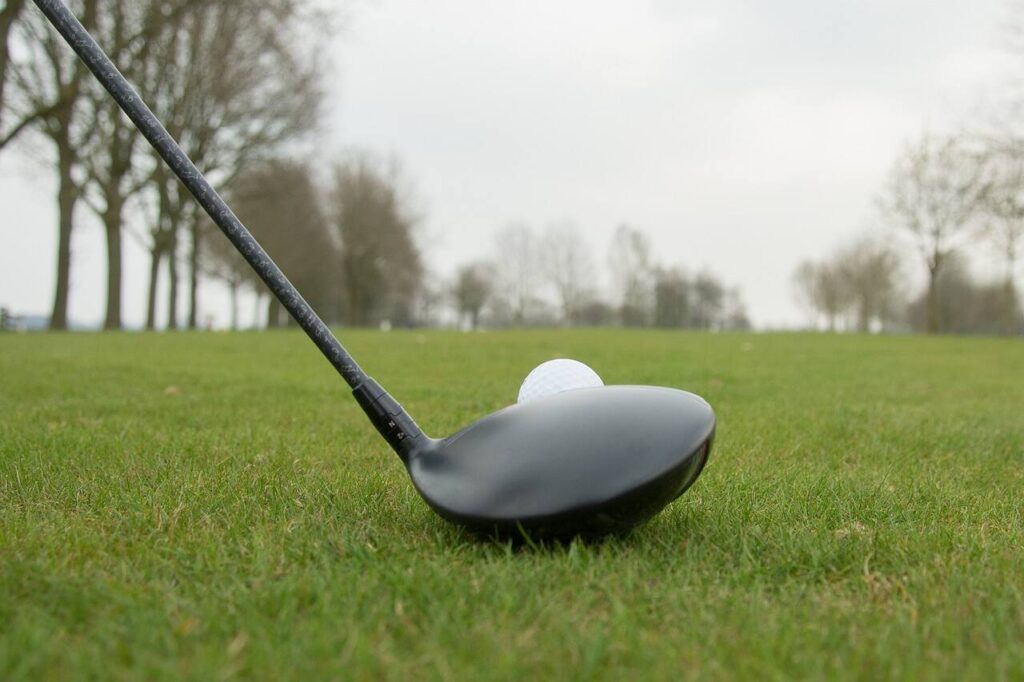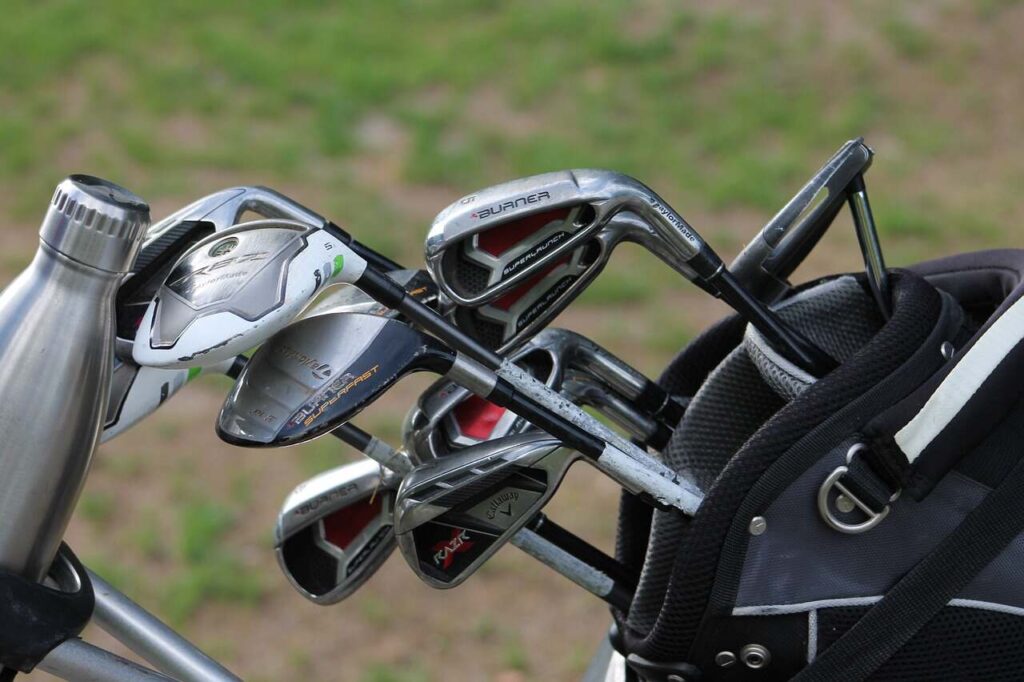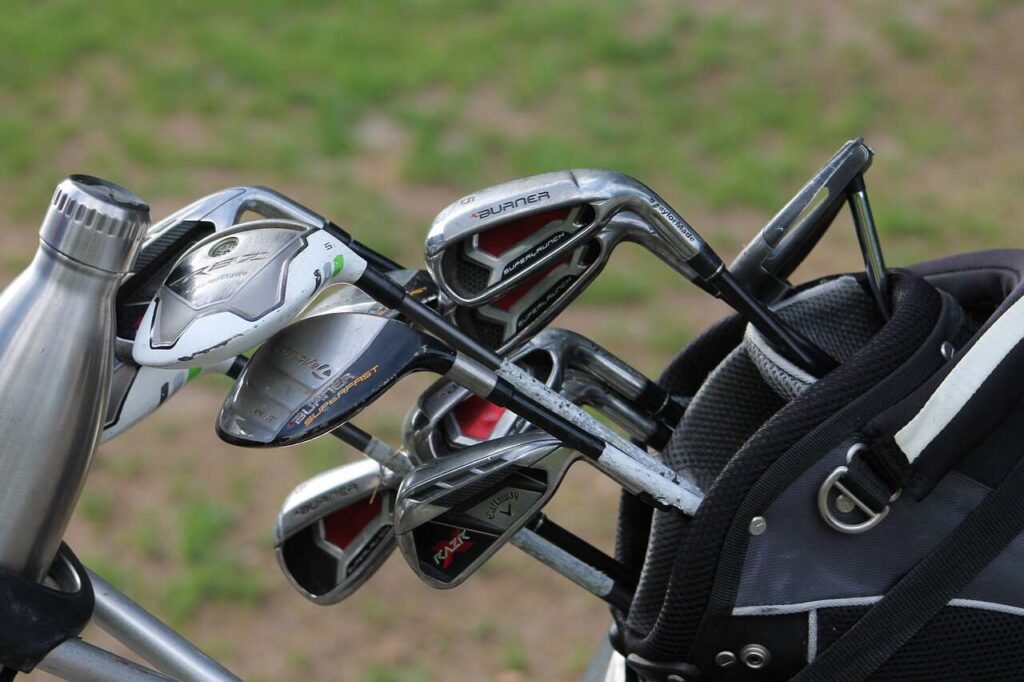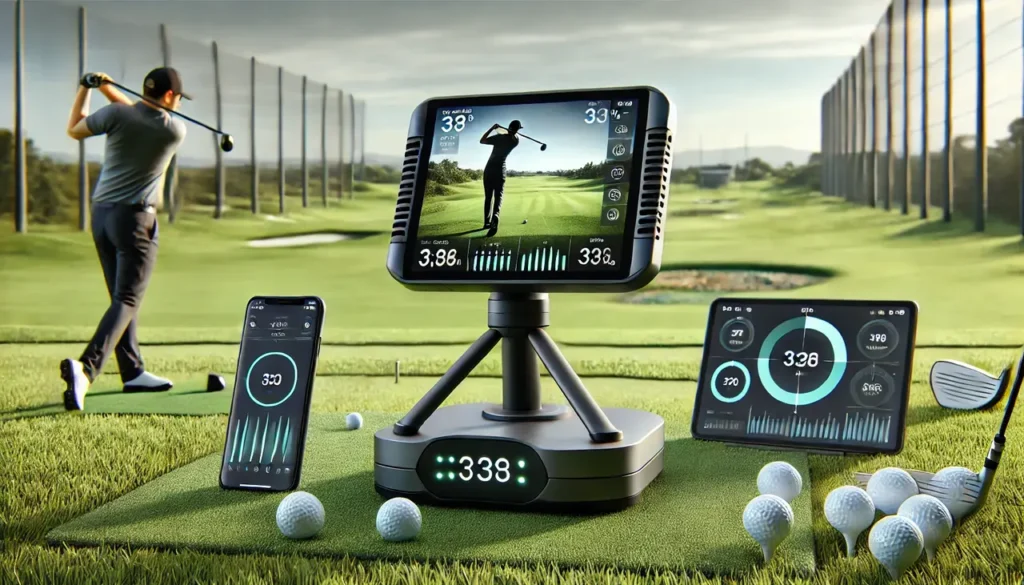Golf is a game of choices—choosing the right club can make or break your performance on the course. But with so many types of clubs in your bag, each designed for a specific purpose, it can be tough to know which one to reach for. Whether you’re looking to drive the ball down the fairway, navigate tricky terrain, or sink that perfect putt, understanding the role of each club can give you a serious edge.
In this guide, we’ll walk you through the different types of golf clubs for women, men and kids and helping you decide when and how to use them to get the most out of your game. By the end, you’ll feel confident about selecting the right club for every shot—whether you’re a weekend golfer or hitting the greens regularly.
Table of Contents
1. Drivers
The driver is the longest and most powerful club in your bag, typically used for teeing off on longer holes. Its large clubhead and long shaft are designed to generate maximum distance, making it the go-to club for those crucial first shots.
When to Use:
Drivers are used primarily on par 4s and par 5s, where distance is key. If you’re looking to cover the most ground with one swing, the driver is your best friend.
Tips for Choosing a Driver:
Look for a driver with a loft that suits your swing speed. If you have a slower swing speed, a higher loft (10.5 degrees or more) can help you get the ball airborne more easily.

2. Fairway Woods
Fairway woods are incredibly versatile clubs, used both for long shots from the fairway and for tee shots on shorter holes. Typically labeled as 3-woods or 5-woods, these clubs offer more control than a driver while still providing plenty of distance.
When to Use:
Fairway woods are great for long approaches from the fairway, particularly when the ball is sitting cleanly. You can also use them for tee shots when you need distance but don’t require the full power of a driver.
Tips for Choosing a Fairway Wood:
Consider the loft and clubface design to ensure you’re getting the right balance between distance and control.
3. Hybrids
Hybrids are a cross between fairway woods and irons, offering the best of both worlds. They’re easier to hit than long irons and more versatile than woods, making them a popular choice for many golfers.
When to Use:
Hybrids are perfect for long shots out of rough or difficult lies where control and precision are needed. They’re also great replacements for long irons, which can be harder to hit consistently.
Tips for Choosing a Hybrid:
When choosing a hybrid, match the loft to your current irons or fairway woods for a smooth transition in your set.
4. Irons
Irons are the workhorses of your golf bag. They come in numbered sets (usually 3 through 9) and are used for a variety of shots from the fairway, rough, and even from tight lies near the green. Irons have smaller clubheads than woods, designed for precision rather than pure power.
When to Use:
Irons are typically used for approach shots into the green, ranging from about 150-200 yards for mid to long irons, and shorter distances for short irons.
Tips for Choosing Irons:
Consider your skill level when choosing irons. Forgiving cavity-back irons are great for beginners, while muscle-back irons offer more control for experienced golfers.
5. Wedges
Wedges are specialty irons designed for short, high-lofted shots. They come in several types: pitching wedges, sand wedges, gap wedges, and lob wedges. Wedges help you with precise shots near the green and are essential for getting out of tricky situations, like bunkers or deep rough.
When to Use:
Wedges are used for shots within 100 yards of the green. Pitching wedges are great for longer approach shots, while sand wedges are ideal for bunker play. Lob wedges are perfect for high, soft shots over hazards.
Tips for Choosing Wedges:
Choose wedges based on loft, bounce, and grind options that suit your playing style and the types of shots you frequently face.
6. Putters
The putter is arguably the most important club in your bag when it comes to scoring. Used exclusively on the greens, putters come in various shapes and styles, including blade, mallet, and counterbalanced designs, each offering different levels of feel and stability.
When to Use:
Putters are for putting, plain and simple. They help roll the ball into the hole after you’ve reached the green.
Tips for Choosing a Putter:
Focus on the shape, feel, and balance of the putter to find one that suits your stroke. Experimenting with different types can help you find what feels most comfortable.

7. Chippers
A chipper is a specialty club designed for short, low-lofted shots around the green. It has a putter-like design but with a slightly lofted face, helping golfers who struggle with traditional wedge shots to get the ball airborne while maintaining control.
When to Use:
Chippers are special clubs ideal for close-to-the-green shots where you need to clear a small obstacle but don’t want too much height. They allow for a putting-like stroke while providing just enough loft to get the ball rolling toward the hole.
Tips for Choosing a Chipper:
Look for a chipper with a loft that suits your chipping style and comfort level. Chippers typically come with lofts around 30-37 degrees, providing a controlled bump-and-run shot.
8. Specialty Clubs
Some golfers also carry specialty clubs, like chippers or long putters, to handle specific situations on the course. These clubs can be incredibly useful if you’re looking to refine particular aspects of your game.
When to Use:
Specialty clubs are used for unique situations—chippers for around the green, for example, or long putters for stability in your putting stroke.
Tips for Choosing Specialty Clubs:
Assess whether these clubs fill a gap in your current set or help you with a specific weakness in your game.
Build the Perfect Set for Your Game
No two golfers are the same, and your set of clubs should reflect your unique style and skill level. By understanding the different types of golf clubs and when to use them, you’ll be better equipped to choose the right mix for your bag.
Whether you’re a beginner building your first set or a seasoned player refining your collection, remember that each club has its own role to play. And as you grow in the game, your understanding of how to use them effectively will only improve.
Men’s, Women’s, and Kids’ Golf Clubs: What’s the Difference?
When shopping for golf clubs, it’s important to remember that not all clubs are created equal. Men’s, women’s, and kids’ golf clubs are specifically designed to match the physical attributes and playing needs of different golfers. Here’s a breakdown of the key differences:
1. Men’s Golf Clubs
Men’s clubs are generally designed with a longer shaft and heavier clubhead to accommodate the typically larger stature and greater strength of male golfers. The flex of the shaft is also designed for higher swing speeds, giving men more distance and control over their shots.
Key Features:
- Longer shafts for taller players
- Heavier clubheads for more power
- Shaft flex designed for higher swing speeds
2. Women’s Golf Clubs
Women’s clubs are designed to be lighter and shorter, reflecting the fact that women, on average, are shorter and have slower swing speeds compared to men. This design helps women generate more clubhead speed and distance while maintaining control. Additionally, women’s clubs often come with more flexible shafts to increase performance with slower swings.
Key Features:
- Lighter and shorter shafts
- More flexible shaft for improved swing speed
- Grips are typically smaller to fit smaller hands
3. Kids’ Golf Clubs
Kids’ golf clubs are specifically crafted for young golfers in terms of size, weight, and flexibility. These clubs are much lighter and shorter, making it easier for kids to swing without struggling to control the club. As kids grow, their clubs should be updated to ensure they’re using the right size and weight to avoid developing bad habits.
Key Features:
- Shorter and lighter for easier handling
- More flexible shafts for slower swing speeds
- Designed for developing young players
Choosing the Right Set for You
Whether you’re buying clubs for yourself, a family member, or a friend, it’s important to ensure that the clubs are the right fit. Choosing the correct length, weight, and shaft flexibility can greatly improve performance and comfort, making the game more enjoyable for golfers of all ages and skill levels.
FAQs: Types of Golf Clubs for Women, Men, and Kids
What is the difference between men’s and women’s golf clubs?
Men’s golf clubs are typically longer, heavier, and designed with stiffer shafts to match higher swing speeds. Women’s clubs are lighter, shorter, and often have more flexible shafts to accommodate slower swing speeds and provide greater control.
Can women use men’s golf clubs?
Yes, women can use men’s clubs, but it’s important to make sure the clubs are the right length and weight for your body and swing. Often, women will find better results with clubs specifically designed for them, as these clubs are built to enhance swing speed and control.
What’s the advantage of using hybrids over long irons?
Hybrids offer more forgiveness and are easier to hit than long irons. They combine the distance of fairway woods with the precision of irons, making them a popular choice for tricky lies and long approach shots.
When should I use a wedge versus an iron?
Wedges are ideal for short, high-lofted shots around the green, while irons are better for longer approach shots from the fairway. Use a wedge when you need more control and height to land softly on the green.
Do kids need specialized golf clubs, or can they use adult clubs?
Kids should always use clubs designed for their height, strength, and skill level. Using adult clubs can lead to bad form and make the game less enjoyable. Specialized kids’ clubs are lighter, shorter, and easier to control, which helps young golfers develop proper technique.
How do I know which driver loft is best for me?
The best driver loft depends on your swing speed. If you have a slower swing, a higher loft (10.5 degrees or more) will help get the ball airborne. Faster swings may benefit from lower lofts to reduce backspin and increase distance.
Should I use the same brand for all my clubs?
It’s not necessary to use the same brand for all your clubs. Many golfers mix brands to create a set that best suits their playing style. Focus on how the clubs perform for you, rather than sticking to one brand across the board.
How often should I replace my golf clubs?
While there’s no set rule, a good guideline is to replace your clubs every 3-5 years, depending on how often you play. Worn-out grips, clubfaces, or technological advancements are signs that it might be time for an upgrade.



